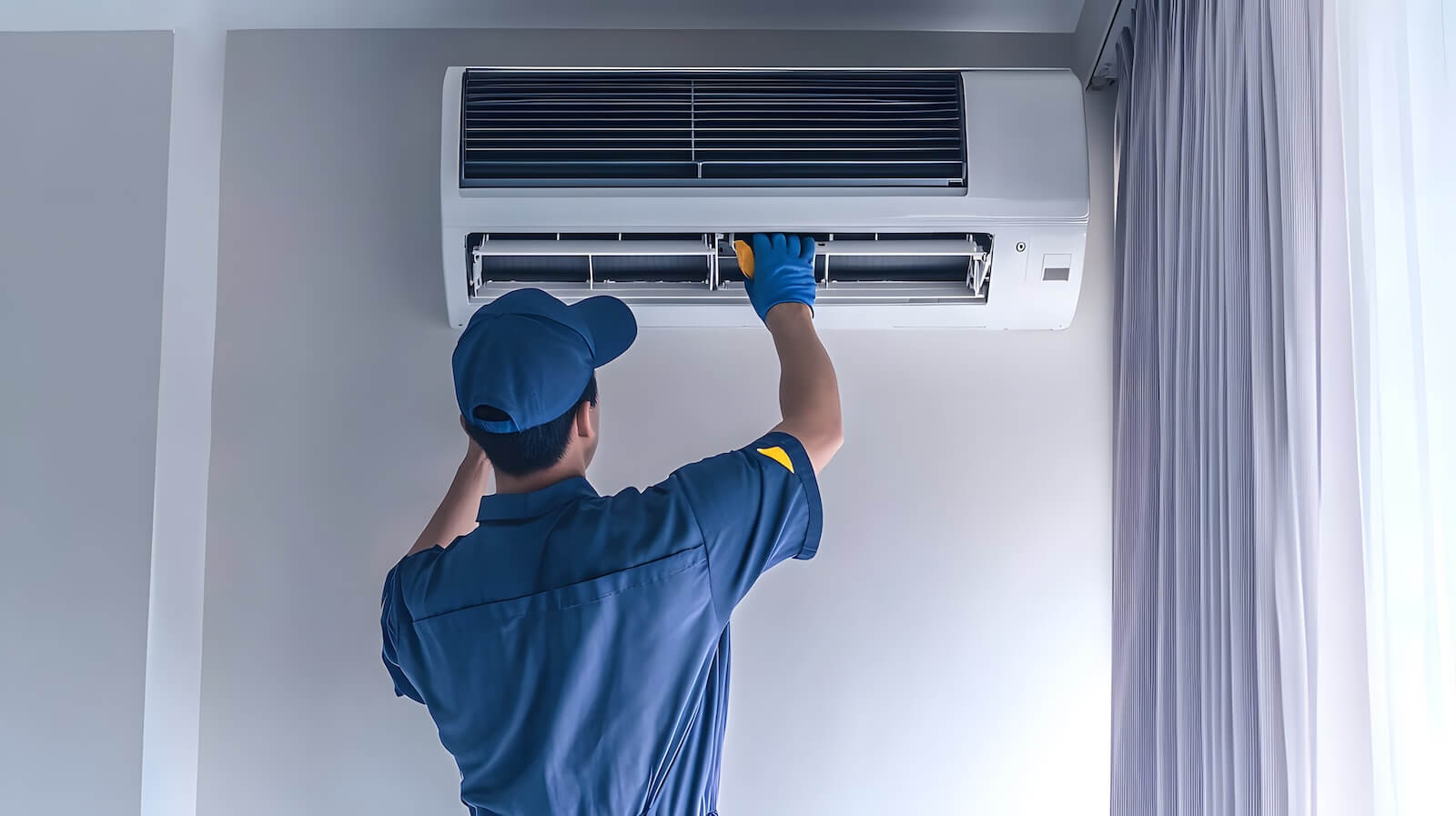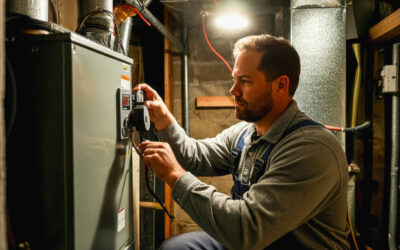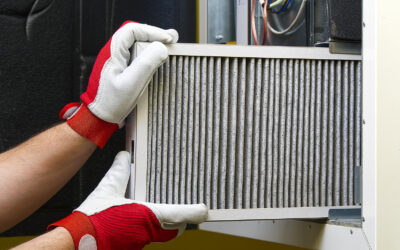When it comes to heating and cooling solutions for homes, traditional central HVAC systems with ductwork have been the norm for decades. However, a ductless HVAC unit, also known as a mini-split or split-system, has emerged as an innovative alternative that provides efficient, versatile, and customizable comfort. If you’re considering an upgrade to your home’s climate control or adding heating and cooling to a specific room, learning about ductless HVAC systems can be a game-changer. In this blog, we’ll delve into what ductless HVAC units are, how they work, their benefits, and where they’re best suited.
What Makes Up a Ductless HVAC Unit?
A ductless HVAC unit, or mini-split system, is a heating and cooling system that doesn’t rely on traditional ductwork to distribute air. Instead, these systems consist of an outdoor compressor unit connected to one or more indoor air-handling units, or “heads,” via a conduit containing power cables, refrigerant tubing, and a condensate drain line.
How Does It Work?
A ductless mini-split system operates similarly to a standard air conditioning or heat pump system but without the ducts. The outdoor unit contains a compressor and condenser, while the indoor units are mounted on walls or ceilings and deliver conditioned air directly into the room. The indoor units are responsible for both absorbing heat (in cooling mode) and distributing warm or cool air, depending on the system’s setting.
The absence of ducts means the system doesn’t lose energy through duct leaks, which can be a significant advantage in older homes or areas where installing ductwork is impractical. Ductless systems can be used for both heating and cooling, providing a comprehensive climate control solution year-round.
Components of a Ductless HVAC Unit
A ductless HVAC system has two primary components:
- Outdoor Unit: The outdoor component of a ductless system houses the compressor and condenser. It is connected to the indoor unit(s) by a conduit that runs through a small, typically 3-inch hole in the wall.
- Indoor Unit(s): The indoor units, also known as air handlers or heads, are mounted on walls or ceilings within the room they serve. These units contain a blower, an evaporator coil, and a filter to condition and distribute air directly into the space.
Ductless systems can support multiple indoor units connected to a single outdoor unit, allowing homeowners to create “zones” within the home. Each indoor unit can be independently controlled, providing customized comfort for different areas of the house.
Benefits of Ductless HVAC Units
Ductless HVAC units offer several advantages over traditional ducted systems, making them a popular choice for various applications:
1. Energy Efficiency
One of the standout features of ductless HVAC units is their energy efficiency. According to research, duct losses can account for more than 30% of energy consumption for space heating or cooling in a traditional ducted HVAC system. By eliminating the need for ducts, mini-split systems significantly reduce energy waste, leading to lower utility bills and a smaller carbon footprint.
Many ductless systems also have inverter-driven compressors, which adjust their speed based on heating or cooling demand. This variable-speed operation allows the system to maintain a consistent indoor temperature without the energy spikes associated with conventional HVAC systems’ traditional on/off cycling.
2. Zoned Comfort Control
Ductless systems allow for zoned comfort control, meaning you can set different temperatures for different areas of your home. Each indoor unit can be independently controlled with its own thermostat, allowing for tailored comfort in each room. For example, you can keep your bedroom cooler at night while maintaining a warmer temperature in the living room.
Zoned control enhances comfort and improves energy efficiency by ensuring that you’re not wasting energy heating or cooling rooms that are not in use.
3. Easy Installation
Ductless systems are far easier and less invasive to install than central HVAC systems with ductwork. A ductless unit requires only a small hole in the wall to connect the indoor and outdoor units, avoiding the need for extensive ductwork.
A professional installation can often be completed in just one day, depending on the complexity and number of indoor units being installed. This makes ductless systems an ideal solution for older homes, home additions, garages, basements, and other spaces where running ducts would be difficult or costly.
4. Improved Indoor Air Quality
Traditional ducted systems can harbor dust, allergens, and other contaminants within the ducts, which can then be distributed throughout the home. In contrast, ductless HVAC units have multi-stage filtration systems designed to reduce allergens, dust, bacteria, and other particulates in the air.
Since there are no ducts to accumulate dust and debris, ductless systems can offer cleaner air, which is particularly beneficial for individuals with allergies or respiratory issues.
5. Flexible Design Options
Ductless HVAC units come in various designs to blend seamlessly with your home’s interior. The indoor units can be mounted on walls, recessed in ceilings, or even set up as floor-standing models. Their sleek design and quiet operation make them a discreet and aesthetically pleasing choice for any room.
Where Are Ductless HVAC Units Best Suited?
Ductless HVAC units are versatile and can be used in various settings. Here are some scenarios where a ductless system might be the ideal solution:
- Older Homes: In homes where installing ductwork is impractical or would compromise the structure’s integrity, ductless systems provide an efficient and unobtrusive solution for heating and cooling.
- Room Additions or Converted Spaces: If you’re adding a new room, converting a garage, or finishing a basement, a ductless system allows you to provide climate control in the new space without extending your existing ductwork.
- Multi-Story Homes: Ductless systems can address temperature imbalances commonly found in multi-story homes, providing zoned comfort and eliminating the need to overwork a central system.
- Energy-Efficient Upgrades: For homeowners looking to reduce their energy consumption, ductless systems offer an efficient alternative to traditional HVAC units, particularly in homes with rooms that are rarely used.
Is a Ductless HVAC Unit Right for Your Home?
A ductless HVAC unit is a versatile, energy-efficient, and cost-effective solution for heating and cooling your home. Its ability to provide zoned comfort, improve indoor air quality, and adapt to various room configurations makes it an attractive option for many homeowners. With easy installation and flexible design options, ductless systems are perfect for older homes, additions, and areas where traditional ductwork is not feasible.A ductless HVAC unit could be the perfect fit if you’re considering upgrading your home’s heating and cooling system or adding climate control to a specific area. At Steel T Home Services, our team of HVAC experts is here to help you explore your options, guide you through the installation process, and ensure your home remains comfortable year-round. Contact us today to learn more about ductless HVAC solutions and how they can benefit your home.
Steel T Home Services is Denver's choice for HVAC, plumbing & electrical needs. With over 40 years of experience in serving our valued customers’ needs, Steel T is committed to providing unparalleled comfort to your home.



